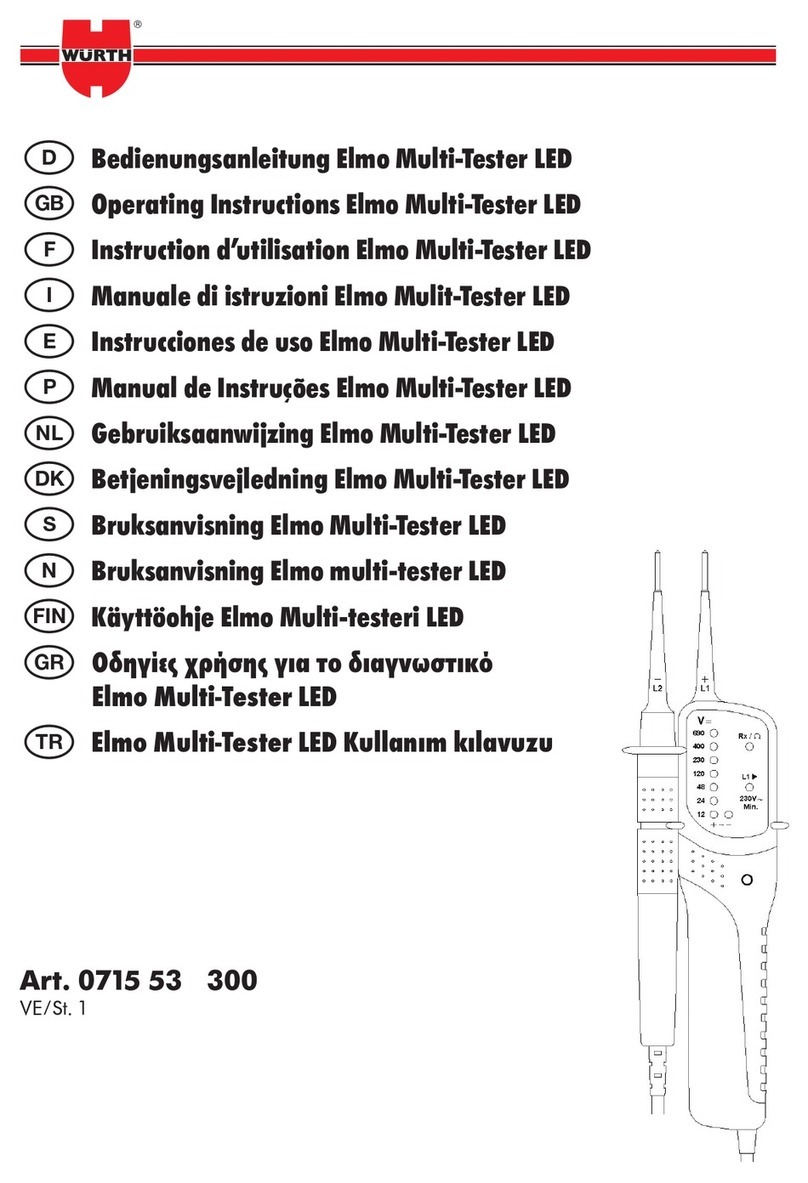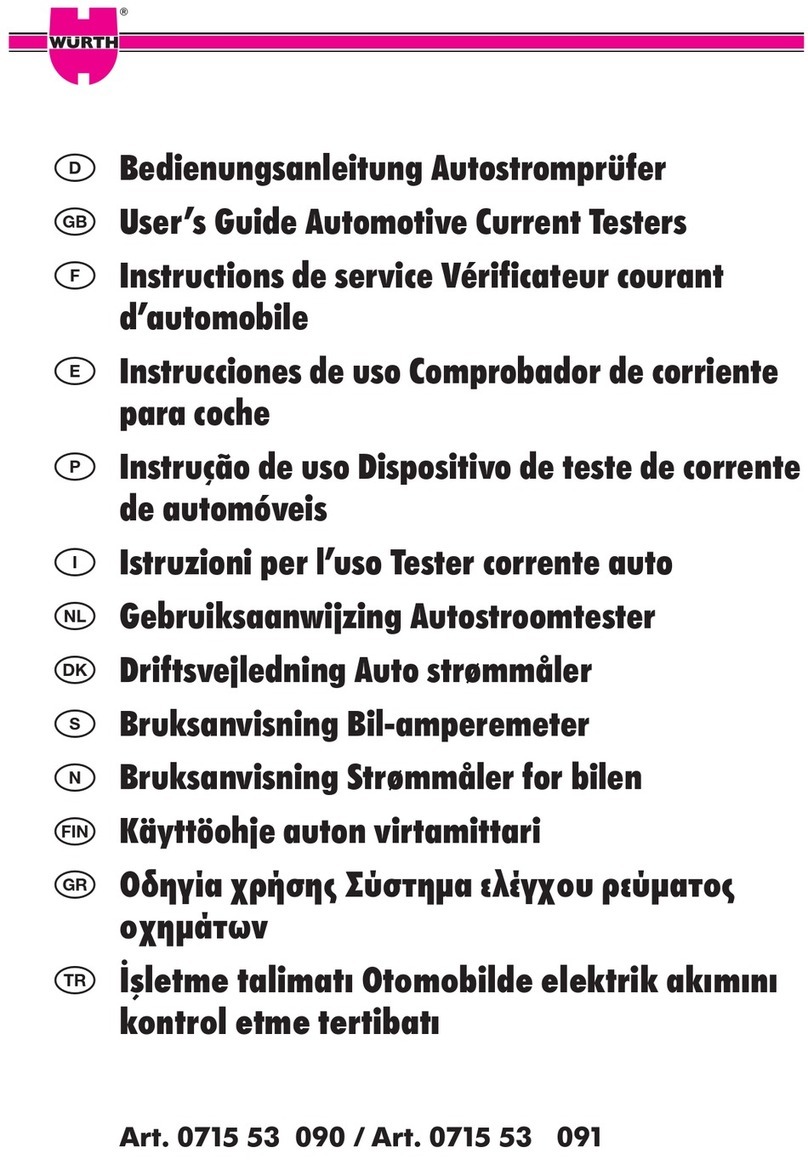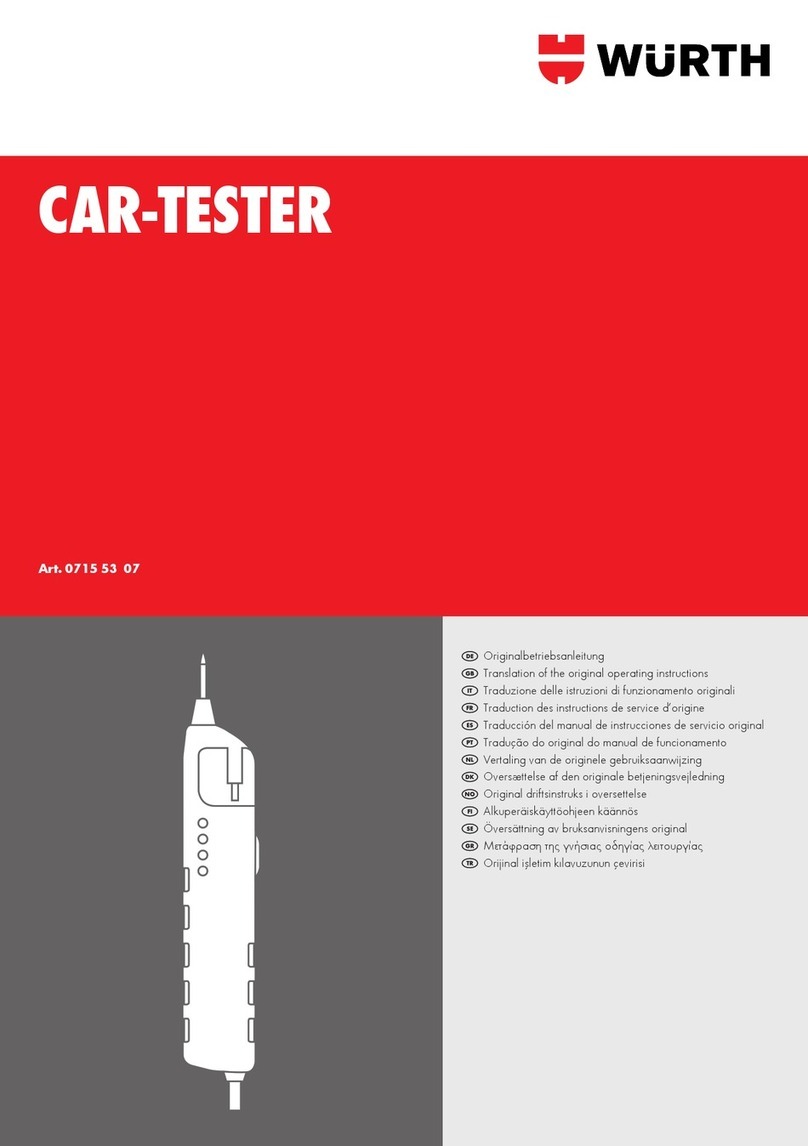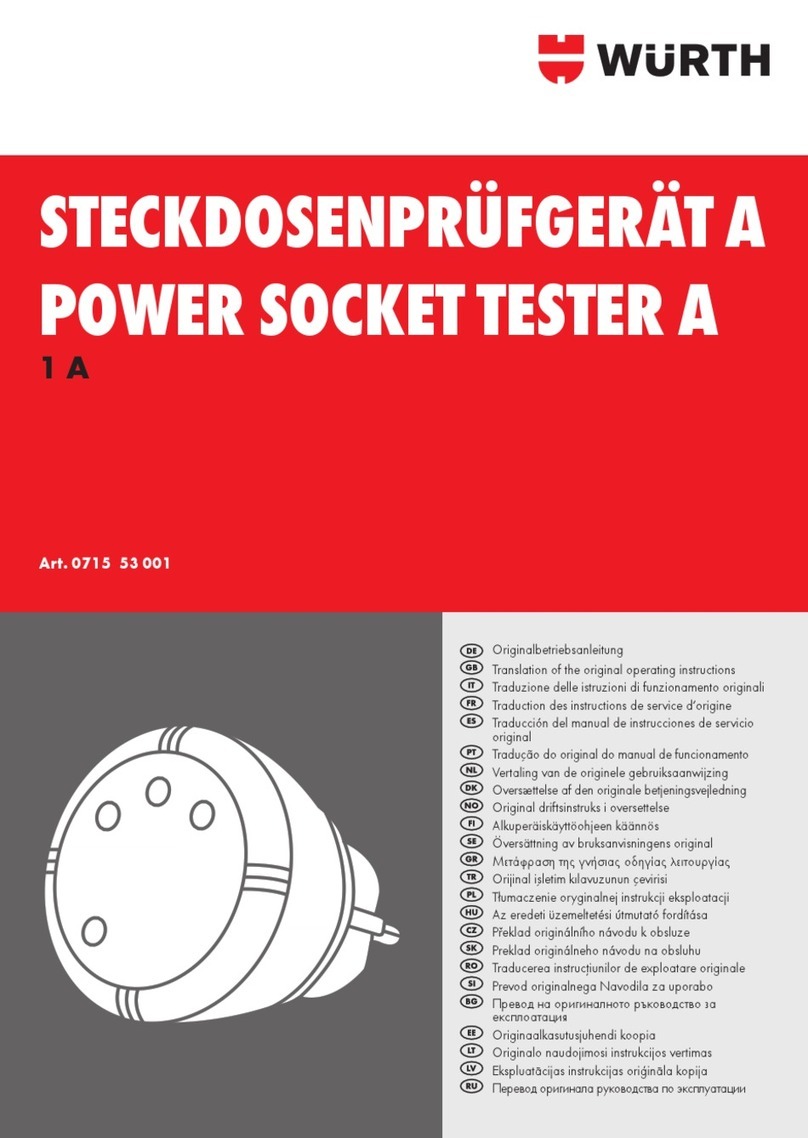
5
Der Spannungsprüfer muss
kurz vor dem Einsatz auf
Funktion geprüft werden.
Vergewissern Sie sich, dass
Messleitungen und Gerät in
einwandfreiem Zustand sind.
■Überprüfen Sie das Gerät an einer bekannten
Spannungsquelle , z. B. 230 V-Steckdose.
■Fällt hierbei die Anzeige einer oder mehrerer
Funktionen aus, darf das Gerät nicht mehr ver-
wendet werden und muss vom Fachpersonal
überprüft werden.
■Stromschlag kann zum Tod oder zu schweren
Verletzungen von Personen führen sowie eine
Gefährdung für die Funktion von Gegen-
ständen (z. B. die Beschädigung des Gerätes)
sein.
■Bitte beachten Sie die fünf Sicherheitsregeln:
1. Freischalten
2. Gegen Wiedereinschalten sichern
3. Spannungsfreiheit feststellen (Spannungs-
freiheit ist 2-polig festzustellen)
4. Erden und kurzschließen
5. Benachbarte unter Spannung stehende Tei-
le abdecken
■Richten Sie das LED-Licht nie direkt oder
indirekt durch reektierende Oberächen auf
das Auge.
■Vermeiden Sie einen Betrieb des Gerätes in
der Nähe von elektrischen Schweißgeräten,
Induktionsheizern und anderen elektromagne-
tischen Feldern.
■Nach abrupten Temperaturwechseln muss das
Gerät vor dem Gebrauch zur Stabilisierung
ca. 30 Minuten an die neue Umgebungstem-
peratur angepasst werden.
■Bei niedrigen Temperaturen unter 5 °C
kann die Bereitschaft des Spannungsprüfers
beeinträchtigt werden. Sorgen Sie für eine
ausreichende Stromversorgung. Verwenden
Sie Batterien, die für solche Temperaturbe-
reiche speziziert sind.
■Setzen Sie das Gerät nicht längere Zeit hohen
Temperaturen aus.
■Vermeiden Sie staubige und feuchte Umge-
bungsbedingungen.
■Messgeräte und Zubehör sind kein Spielzeug
und gehören nicht in Kinderhände!
■In gewerblichen Einrichtungen sind die Un-
fallverhütungsvorschriften des Verbandes der
gewerblichen Berufsgenossenschaften für elekt-
rische Anlagen und Betriebsmittel zu beachten.
■Gerät nur an den Handgrien anfassen, ver-
meiden Sie die Berührung der Prüfspitzen!
■Prüfungen auf Spannungsfreiheit immer nur
zweipolig durchführen!
■Nicht mit oenem Batteriefach benutzen!
Die Messleitungen müssen während eines Bat-
teriewechsels vom Messkreis entfernt werden.
■Eine einwandfreie Anzeige ist im Temperatur-
bereich von -15 °C bis + 45 °C sichergestellt.
■Das zusätzlich anzeigende Warnsymbol und
Vibration bei Spannungen > 35 V dienen nur
zur Warnung von lebensgefährlichen Span-
nungen, nicht zur Messung.
■Den Warnton vor Prüfungen mit Umgebungs-
lautstärke auf Hörbarkeit prüfen.
■Batterien sofort wechseln, wenn beim Ein-
schalten ein dauerhaftes Warnsignal ertönt
oder das Gerät sich schon beim Einschalten
sofort wieder abschaltet.
■Um das Gerät vor Beschädigung zu schützen,
entfernen Sie bitte bei längerem Nichtge-
brauch des Gerätes die Batterien.
■Verwenden Sie die verschiedenen ange-
zeigten Signale des Gerätes einschließlich des
ELV-Grenzwertes nicht für Messzwecke.
■Ein Spannungsprüfer mit relativ niedriger
Impedanz wird im Vergleich zum Referenzwert
von 100 kΩ nicht alle Störspannungen mit
einem Ursprungswert oberhalb ELV anzeigen.
Bei Kontakt mit den zu prüfenden Anlagen-
teilen kann der Spannungsprüfer die Störspan-
nungen durch Entladung vorübergehend bis
zu einem Pegel unterhalb ELV herabsetzen.
Nach dem Entfernen des Spannungsprüfers
wird die Störspannung ihren Ursprungswert
wieder annehmen.
Sicherheitshinweise








































